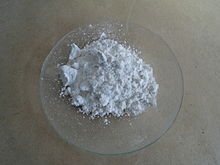Benedict’s reagent (often called Benedict’s qualitative solution or Benedict’s solution) is a chemical reagent and complex mixture of sodium carbonate, sodium citrate and copper(II) sulfate pentahydrate. It is often used in place of Fehling’s solution to detect the presence of reducing sugars.
Such tests that use this reagent are called the Benedict’s tests. A positive test with Benedict’s reagent is shown by a color change from clear blue to brick-red with a precipitate.
Generally, Benedict’s test detects the presence of aldehydes, alpha-hydroxy-ketones, and hemiacetals, including those that occur in certain ketoses. Thus, although the ketose fructose is not strictly a reducing sugar, it is an alpha-hydroxy-ketone and gives a positive test because it is converted to the aldoses glucose and mannose by the base in the reagent.
Benedict’s test operates by reducing sugars that are heated in the presence of an alkali into powerful reducing species known as enediols. The newly formed enediols proceed to reduce cupric compounds (Cu2+) present in the Benedict’s reagent to cuprous compounds (Cu+) which are precipitated as insoluble red copper(I) oxide (Cu2O).
| SKU | 8541-00, 8542-00 |
|---|





